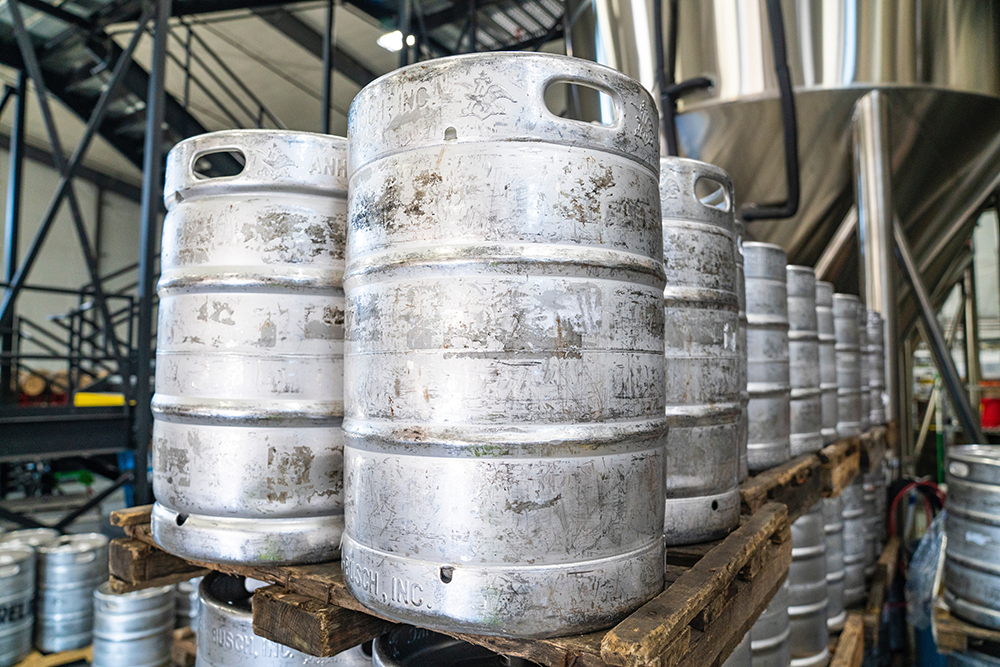What Is Considered a Good Brewery Profit Margin?

It’s a common question among all business owners:
“Are our profit margins on par with others?”
And even more so in the microbrewery industry, because the number can vary greatly depending on your business configuration.
In this blog, we’re going to break down the variances and help you determine what’s considered a “good” brewery profit margin for your business.
Let’s dive in.
You can skip ahead:
What Goes Into a Brewery’s Profit Margin?
A profit margin is one of the most commonly used formulas to gauge the degree to which a business makes money.
It represents what percentage of sales has turned into profits, and largely depends on the operating costs that it takes to run a business.
Profit margin (%) = (profit ÷ sales dollars) × 100
Brewing is a labor intensive ordeal, or if automated, very heavy in capital investment.
Meaning, a brewery’s profit margin will change depending on how your business is set up.
If you spend a lot of cash up front to invest in advanced technology that will do a lot of the labor itself, your monthly brewery profit margin will be “better” than if you have to pay labor costs each month.
Remember, profit margin = (revenue – costs) / revenue.

What Are The Largest Costs Of a Brewery?
Typically, breweries are the most expensive in their first year of business.
Start up costs can be exorbitant – between $500,000 – $1,500,000 – and will include top-of-the-line equipment, a large space to brew, and licenses.
Ongoing operating costs include brewing supply costs, insurance, utilities, marketing, parking, and more.
If you add it all up in the first few years of owning a brewery, your monthly expenses to operate the brewery may total 80 to 90% of your monthly sales!
You’ll likely need investments or financing to support the monthly expenses during the first few years of operation, until your revenue can support the costs on its own.
We recommend working with an experienced brewery accountant to choose the best financing option for your business. While you can deliver great brews and eats, proper financial plans are what will solidify your brewery’s long-term success.
What is Considered a Good Brewery Profit Margin?
The average profit margin for breweries is typically around 20%.
And according to Beverage Trade Network, a “good” profit margin for a brewery is around 25% or higher.
If we compare this to a restaurant, it’s significantly higher, as profit margins for restaurants tend to average around 5%.
Which means that brewery owners take home a lot more money, right?
Not quite. It all goes back to how the business is set up.
A brewery needs a lot more investment in its machinery and personnel than a restaurant.
And simple maintenance costs can vary greatly. Restaurant owners may need to replace a dishwasher, while brewery owners may need to replace a $30,000 tank.
Breweries take a lot of cash up front, and they also have to reinvest the money year on year to keep up with growth and demand, so brewery owners rarely get to keep the money from their high profits..
This means that the 20% profit is often re-invested back into the business, rather than being distributed as personal income to the owners.
This is important to understand, especially when you finance your business with debt or outside investors. They need to know that any early returns will need to be reinvested.
The bottom line? A higher profit margin does not necessarily translate to more cash.

How Can You Increase Your Brewery Profit Margins?
There are a few things you can do to increase the money you take home from your brewery each month.
Selling beers retail is a great way to make back some of the profit margin, as retail allows for flexible and lenient price mark ups.
Early on, you should self distribute as much of your beer as possible to local bars, restaurants and retail shops as you will make higher margin doing this yourself.
But, at some point in your growth cycle you will need to find and work with a local distributor to expand your marketplace presence.
When this occurs, your sales will go up, but so will your costs, as distributors don’t come cheap. While your profit margin % will decline, your overall profit margin will continue to increase.
Monitoring financials and margins is important to ensure that prices keep pace with rising costs. (Can anyone say inflation?)
Another way to increase your profit margin is to negotiate bulk or early discounts with suppliers.
We recommend working with an experienced brewery accountant to help you find opportunities in your business model and operations.
The extremely high capital expenditures and ongoing operating costs of breweries make it all the more important to keep a keen eye on your cash flow and forecasting numbers consistently, as you’ll need to plan for unexpected expenses and emergencies.
An experienced brewery accountant can help you with this, too.
If you don’t have a brewery accountant that you’re happy with, you can book a quick call with one of our accountants anytime. We’re happy to help.
Until next time!



